Santa Marta, Colombia: Everything You Need To Know
Santa Marta is Colombia’s oldest city. Located on the Caribbean in the northern department of Magdalena. As the first Spanish settlement in Colombia, Santa Marta is also known for being a busy port.
With the Caribbean to the north and west, Tayrona National Park to the east, and Colombia’s Sierra Nevada mountain range to the immediate south, its natural setting is hard to beat.
Colombia’s Caribbean coast is more developed than its Pacific coast, with several enviable cities to choose from, including colonial Cartagena, the traditional, muy auténtico Barranquilla, and the lesser-known, more affordable Santa Marta.
For instance, everyone who appreciates the Caribbean has heard of Cartagena. This Spanish-colonial city on the Caribbean Sea is Colombia’s #1 draw for foreign visitors and home to a sizeable expat community. But just 150 miles up the Caribbean coast is Santa Marta.
Fifteen years ago, Santa Marta was a work in progress, rough around the edges in some areas and downright seedy in others.
While mostly unknown to international audiences, Santa Marta is the preferred vacation destination for locals.
It is favored for its affordability, perpetually warm weather, soft golden sands, and warm Caribbean waters.
Santa Marta’s downtown has an attractive seafront park, plenty of small cafés and bars, as well as coffee shops, boutique hotels, excellent seafood restaurants, and even a cruise-ship port.
Also, there’s a 256-slip marina, and new, tasteful condo projects have sprouted up around the entire area.
Above all, Santa Marta is our favorite spot with expats on the Colombian Caribbean coast.
It doesn’t have Cartagena’s impressive colonial architecture. But, neither does it have Cartagena’s prices or tourism annoyances.
From the pristine bay at Taganga to the classic port ambience of Santa Marta and from the energy of El Rodadero to the gleaming towers of the southern sector, Santa Marta has something for everyone.
Festive and friendly El Rodadero is the most popular location among expats.
Along El Rodadero’s beachfront is a boardwalk lined with palm trees where people come to walk, exercise, and take in the views.
The energy picks up after sundown, and central Rodadero takes on a party feel, with live music and people of all ages out to socialize.
Cost Of Living In Santa Marta, Colombia
The cost of living in Santa Marta is low and a couple could live very well on $1,000 to $1,500 a month.
Click here for currency conversion at today’s exchange rate.
Rent is very affordable, as is eating out and socializing.
Most importantly, Colombia taxes worldwide income, and its income tax rates are moderate, at between 0% and 39%. And, the country offers an exemption on foreign pension income up to a certain threshold.
Capital gains are taxed at a general rate of 15%. In short, property taxes are low.
Let’s take a closer look at the cost of living in Santa Marta, Colombia.
Things To Do In Santa Marta, Colombia
Parque Tayrona
About 20 miles outside Santa Marta is Parque Tayrona, a national park covering around 12 square miles. Here lush green jungles meet the Caribbean, giving way to hidden beaches—some are accessible only by boat.
So, be sure to get an early start. To reach some of the beaches here involves a three-hour hike. As you hike into the park, you’ll stumble across beaches of various sizes, restaurants, and even small hotels and lodging areas.
The hike is relatively flat, and much of it has been turned into a boarded walkway, making it an enjoyable walk for all ages and athletic ability. But, if you prefer to get around quicker, you can explore the park on horseback.
With the relaxing mix of jungle sounds and crashing waves—not to mention the stunning flora, fauna, and ocean scenery—many park visitors opt to stay the night.
Cabo San Juan
Located a three-hour hike into the park, Cabo San Juan beach is a relatively touristy destination with a restaurant and a camp ground that lets you rent either a tent or a hammock.
More romantic options include the EcoHabs—little huts perched above a secluded beach in Tayrona. Each hut has a view of the ocean, a terrace with hammocks, private room, and bathroom.
A Fishing Village
Another popular day trip from Santa Marta is to the fishing village of Taganga, only a 10-minute taxi ride away.
This town is a favorite with backpackers for its many dive shops and cheap bars and restaurants. The fishing boats on the ocean make Taganga a great spot for spectacular sunset views while you drink a cold beer and feast on freshly-caught fish at one of the beachside restaurants.
For some real adventure and a hard-core hiking experience, look no farther than the Lost City hike.
Choose from five- to seven-day guided hikes through the jungle to untouched ruins. Think Inca Trail without the people.
The ruins are different from what you get at Machu Picchu, but many adventurers go for the hike itself—the opportunity to cross rivers and streams, to encounter indigenous people living deep in the jungle, and to get that Indiana Jones experience.
Santa Marta provides a great escape from the bigger cities of Colombia.
And, it’s an inexpensive flight from Medellín or Bogotá.
What Is Santa Marta, Colombia, Like Today?
Santa Marta’s downtown has undergone a restoration effort that has revived its Spanish-colonial parks, churches, and homes to their former glory.
New elements have been introduced. Plus, the city now boasts an attractive seafront park, excellent seafood restaurants, cafés, boutique hotels, and even a cruise-ship port.
All these upgrades attracted interest from around the world, and tasteful condo projects have sprouted up all along this coast, offering an impressive diversity of beach living options.
Santa Marta offers excellent diving, sandy beaches, calm waters, an upbeat and energetic culture, and a collection of diverse and attractive living options.
While Cartagena is where the world comes to visit… Santa Marta is a place to settle in.
And thanks to the continued strength of the U.S. dollar versus the Colombian peso, dollar holders enjoy a serious buying advantage right now.
A Little Bit Of History
Columbus visited Santa Marta on his second voyage to the New World in 1499, officially founded in 1525.
It was here that one of Columbus’ crewmen documented the wealth and riches of the local indigenous people, giving rise to the myth of El Dorado, the fabled city of gold.
Today, remnants of Santa Marta’s historical past can still be seen and enjoyed. The city is working hard to refurbish and preserve historical buildings as well as add new development…
Our Expert’s View
Live And Invest Oversea’s Latin America Correspondent, Lee Harrison, has spent significant time in Santa Marta. He says, “When I first visited Santa Marta in 2010, it was definitely a work in progress. The formerly seedy downtown was undergoing restoration, bringing the old colonial homes, parks, and churches back to their original splendor. Leading-edge investors were prowling the city.”
When we refer to “Santa Marta,” we’re talking about the Santa Marta metro area, which extends 13 miles from Taganga in the north to the airport in the south. This stretch of Caribbean coast is home to an amazing diversity of beachside destinations.
Let’s take a look at them from north to south, starting with Taganga…
Taganga
Firstly, Taganga is a small village surrounded by tall mountains that sits on an expansive, sparkling, deep-blue bay.
The beach is long and unspoiled and is bordered by a new boardwalk.
Secondly, Taganga’s bay is ideal for diving and snorkeling, and you will find several dive shops and excursions available.
Santa Marta City
Santa Marta (the city itself) contains the original historic center and the cruise-ship port. This is the part that underwent the dramatic restoration. Santa Marta also hosts a few inland neighborhoods, such as Bavaria, that would be great for full-time living away from the tourist traffic.
Santa Marta’s Historic Center
If you’ve visited colonial cities in Latin America in the past, the city center of Santa Marta will feel familiar. It consists of blocks of whitewashed colonial structures, including its cathedral, one of the most beautiful I’ve seen on three continents.
With its proximity to the mountains, Santa Marta’s climate is slightly cooler than Cartagena’s, and afternoon rainstorms are a regular occurrence between May and November.
Main points of interest in the city center include Parque Simón Bolívar, an expansive tree-covered plaza that opens up directly to the city’s main beach area. Some of the best restaurants and shopping are in this area and around Parque de los Novios, a peaceful hideout right in the middle of the city. The best nightlife is along Calle 19, one of the narrow city streets that empties into Parque de los Novios.
While Cartagena is overrun with street vendors, Santa Marta is calmer by miles. This is because most of this city’s visitors are Colombians, and street vendors target tourists. You also don’t see the party buses that roam the streets of Cartagena at every hour of every day. Santa Marta has not fallen victim to these… at least not yet.
El Rodadero
El Rodadero lies about 10 minutes south of Santa Marta. It’s been the main draw in the area for years, as people sought to avoid the once-seedy historic center.
The beaches are far longer, wider, and better kept than Santa Marta’s, creating a giant crescent-shaped shoreline that’s several miles long. Rodadero offers a small-town feel that you don’t find in the city.
On the oceanfront, Rodadero boasts a fine sandy beach lined with palm trees along the warm, calm waters.
The palm-shaded boardwalk is filled with people walking and patronizing the kiosks, which sell everything from fresh-made pizza to fresh-squeezed fruit juice.
Weekend nights turn into an impromptu beach party, with families turning out by the hundreds to enjoy (and dance to) the local music of wandering music groups.
We think of El Rodadero as the family destination within the Santa Marta area.
It’s bustling with people enjoying the beach, markets, shops, and boardwalk. Also, it maintains a safe, friendly, and laid-back feel…
The Southern Sector
The southern sector consists of neighborhoods Rodadero Sur, Playa Salguero, Pozos Colorados, and Bello Horizonte. It lies south of Santa Marta and El Rodadero, but before the airport. These areas feature quiet, well-tended, and more exclusive beaches than you’ll see in Santa Marta or El Rodadero. They’re also the site of quite a few new, upscale condo buildings.
This southern sector is the current direction of expansion in the Santa Marta market, where you’ll find most of the new construction and preconstruction deals. The condo projects here are generally high-end, of large size, with nice finishings and amenities. The southern sector is long on natural beauty. Bello Horizonte has the widest beach in the area, and most of the beaches along this stretch are frequented only by the neighboring residents, with little to no tourism. It’s peaceful.
Lee says, “When I came here as a foreign traveler, I found the southern sector a bit dull compared to the party atmosphere in El Rodadero or even Santa Marta Centro. But now I understand its attraction for those who want to escape the bustle of Medellín or Bogotá (or El Rodadero, for that matter).”
Those looking for a colonial Caribbean city with less bustle and more bargains…then Santa Marta could be right for you.
Safety In Santa Marta, Colombia
Santa Marta is generally safe. But as with any place in the world, petty crime does exist. Exercise caution. Don’t walk around with flashy camera equipment or your phone on view, for example, or with your bag open… Pay attention to your surroundings.
Health Care In Colombia
Colombia is home to the best health care in Latin America, with well-equipped hospitals and excellent service available at very affordable prices.
Exceptional health care is another reason retiring in Colombia is so alluring. For example, costs for procedures can be 50% to 90% less than for comparable procedures performed Stateside.
The basic government-subsidized health plan is called EPS. With no Colombian income, this will cost you 12% of the minimum wage. You are obliged to use the facilities specified by the plan, which would be basic.
From there you can buy add-on plans, many of which require that you have EPS as a prerequisite. These entitle you to faster service and better, more upscale facilities. Not everyone offers add-on coverage to people over 60, so you may need to shop around if you’re older.
There are a number of private and public hospitals in Santa Marta that offer excellent, specialized care. There are also a number of medical centers and dental clinics.
In the pharmacies dotted around the city, you may be able to get your medication without a doctor’s prescription (including antibiotics).
Visa And Residency For Colombia
Colombia has three main residency types.
The first is the pensionado visa, or M-11 visa. This is a cash-friendly option; you can apply with as little as US$800 per month from a pension source, plus an administration fee of about US$300.
The visa is valid for three years, after which you must renew.
Applying for a visa is straightforward—you can even apply online. Scan and send a PDF of the required documents: a copy of your passport, two passport-sized photos, and proof of a pension.
However, the pension must be from a government; private pension letters aren’t valid for the pensionado visa. Proof of a government pension will need to be apostilled. The process takes about 10 weeks.
Retirees who want to qualify using a private pension, can apply for a rentista visa. It requires a minimum income (or private pension) of 15 times the Colombian minimum wage.
You can obtain an investment visa by making an investment via a Colombian bank account of about US$165,000.
The visa is valid for five years and allows you to study and work in Colombia. Administrative charges come out to about US$450.
Once you’ve received your visa, you have to register it with Migración Colombia to get your Colombian ID.
This must be done in person in Bogotá within 15 days of getting your visa. Failure to do so will land you with a fine of over US$7,500.
Weather In Santa Marta, Colombia
Santa Marta enjoys a tropical climate.
The coolest month is January with an average temperature of 82.5°F.
April is the warmest month in Santa Marta, Colombia, with temperatures reaching 85.8°F.
The rainy season is May to November.






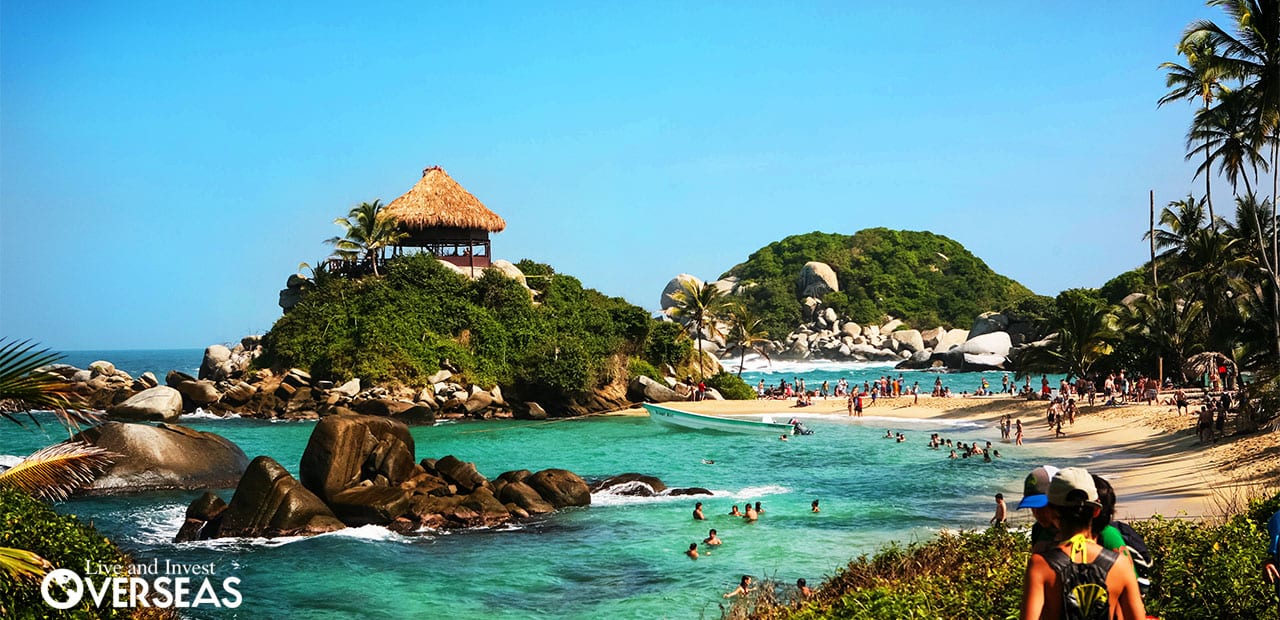

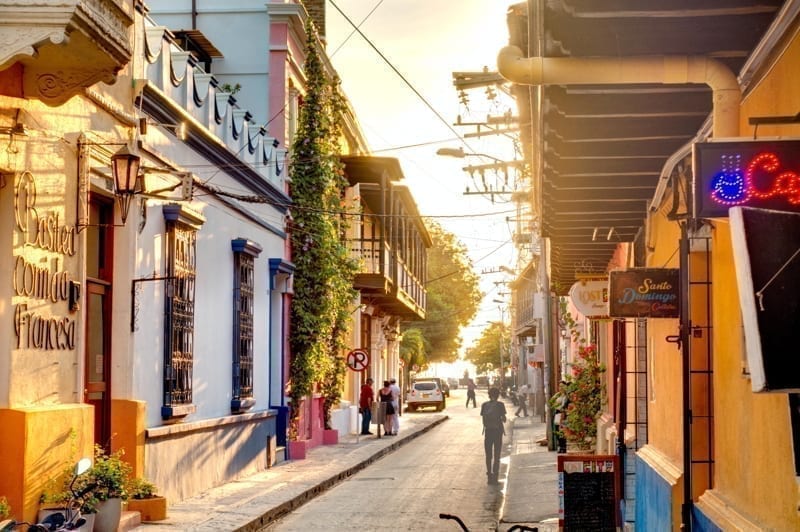
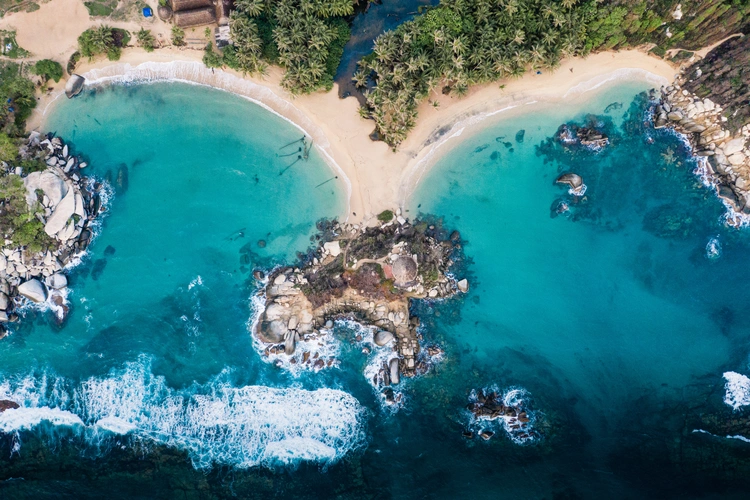
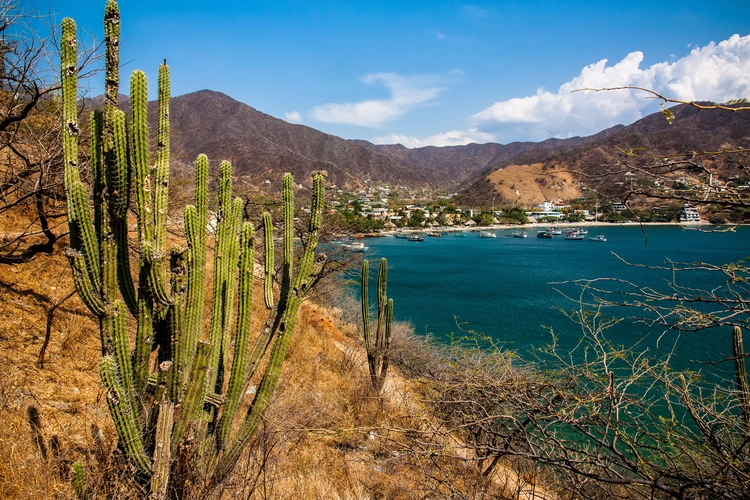
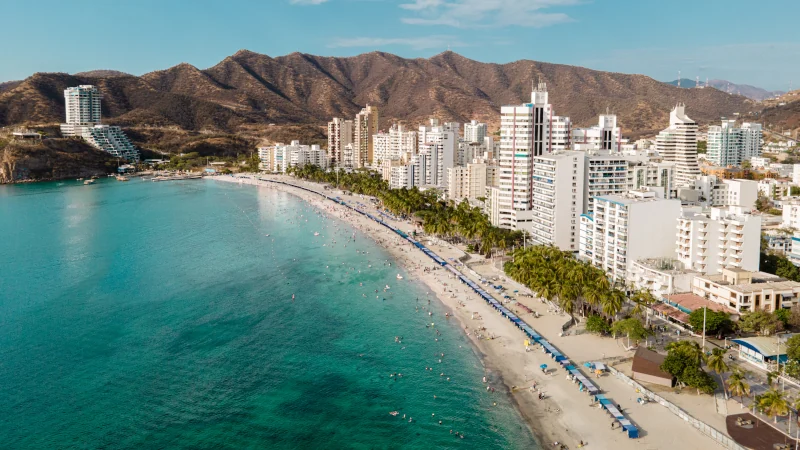 . '
. '
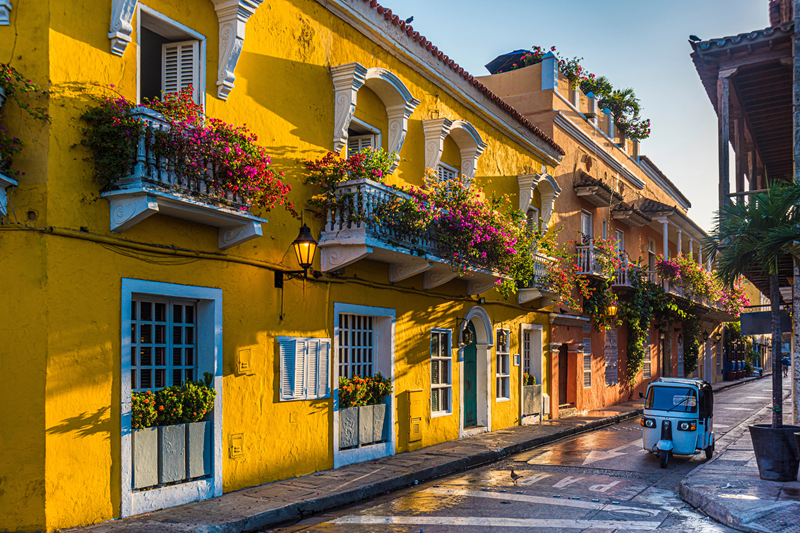 . '
. '
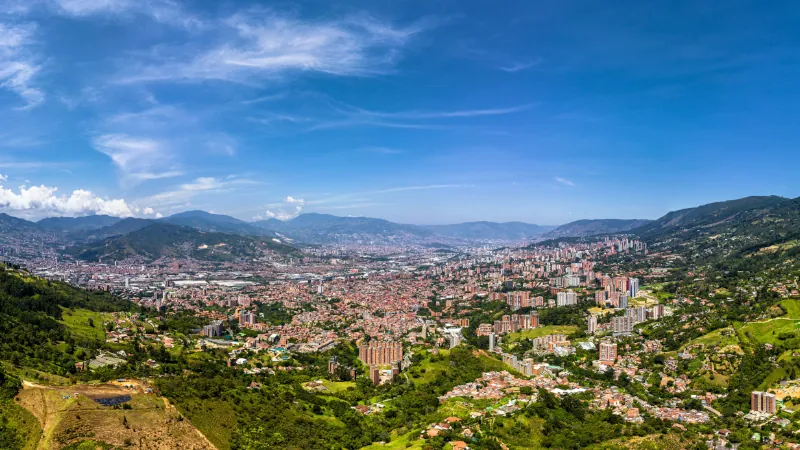 . '
. '
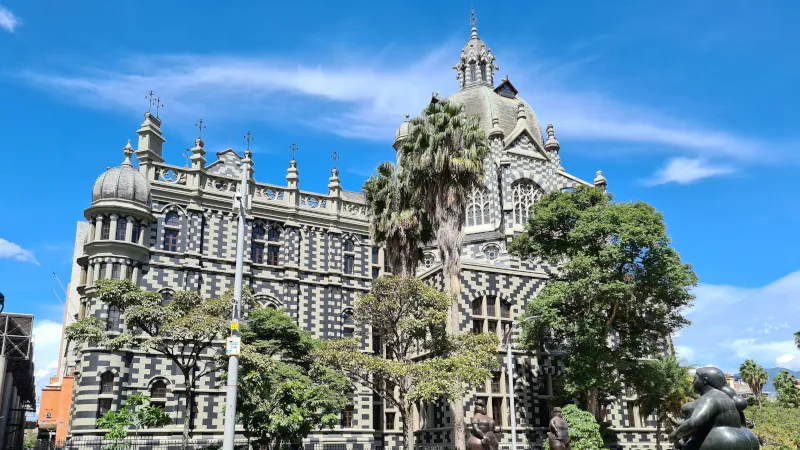 . '
. '
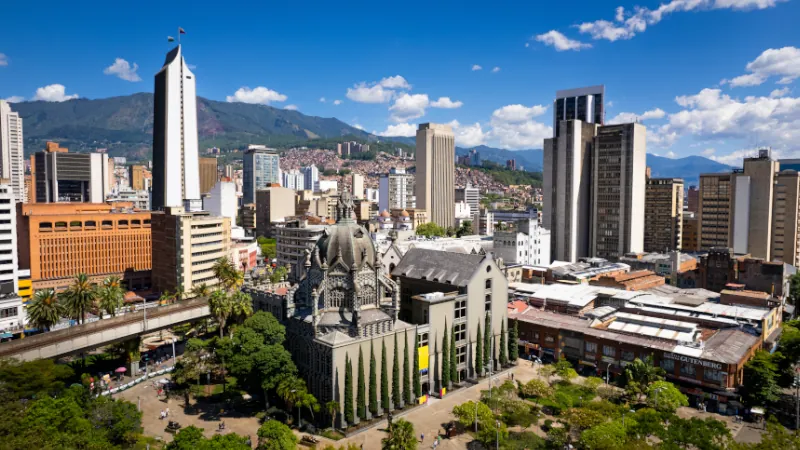 . '
. '








